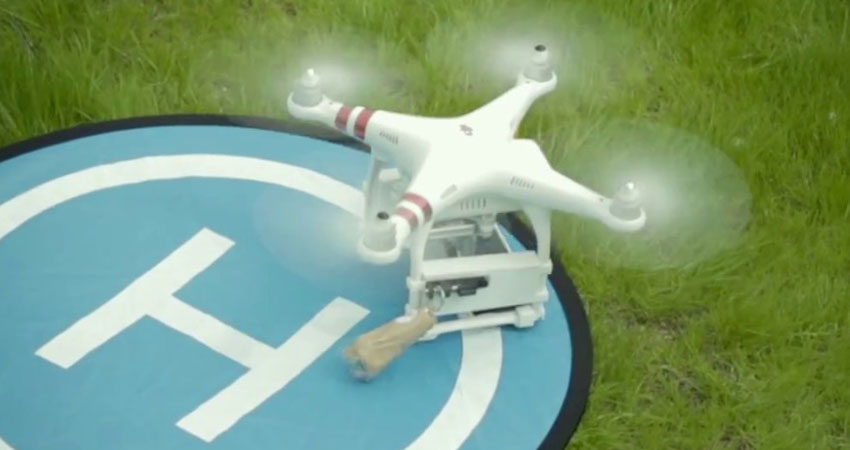Worldpay is testing out a proof of concept that ties together payment verification with residential drone delivery via a special landing pad that doubles as a payment information communication system.
Using EMV contactless payment card technology, the Drone Pay test accesses a customer’s card details stored within the landing pad, via a scan from the drone. If the information matches that of the correct recipient, the parcel is released by the drone.
Greg Worch, senior vice president of ecommerce at Worldpay, said there is no plan at present for deployment of such a system, but Worldpay’s innovation team designed it in anticipation of drone delivery adoption in the near future.
“It’s an outgrowth of our research, exploring how merchants will want to use drones, and what the expectations are,” Worch said. “There are a lot of regulatory, operations and logistics hurdles that have to be knocked down before it becomes a reality, but here’s one way once we’re past the barriers that payment can happen in a frictionless way.”
While payment confirmation normally happens on the front end of an ecommerce transaction, the idea is that by having card details stored in the landing pad it ensures greater security, avoids chargebacks and helps thwart theft.
“This ties delivery to the payment itself,” Worch said. “It creates certainty for the consumer and the merchants in terms of, this product is being delivered, it’s at the door now, and the card is charged at that point. It’s more secure and expectations are met more effectively.”
Worldpay surveyed 507 U.S. adults in July on their attitudes toward new delivery technologies with its partner Socratic Technologies. The study found Gen Z consumers were the most open to drone or autonomous/robot delivery, with 71% looking forward to it, compared to 45% for millennials, 49% for Gen X and 30% for baby boomers. Thirty-seven percent of Gen Z respondents expect this to become a reality in the next 2-5 years.
Clothing, non-perishable groceries and pet supplies were noted by 50% or more of respondents as appropriate for automated delivery, across all age groups except retirees.
While drone delivery is already a reality in places like Iceland and China, the regulatory process is moving slower in the U.S., where the FAA has approved 10 test projects that are in various stages of deployment.

